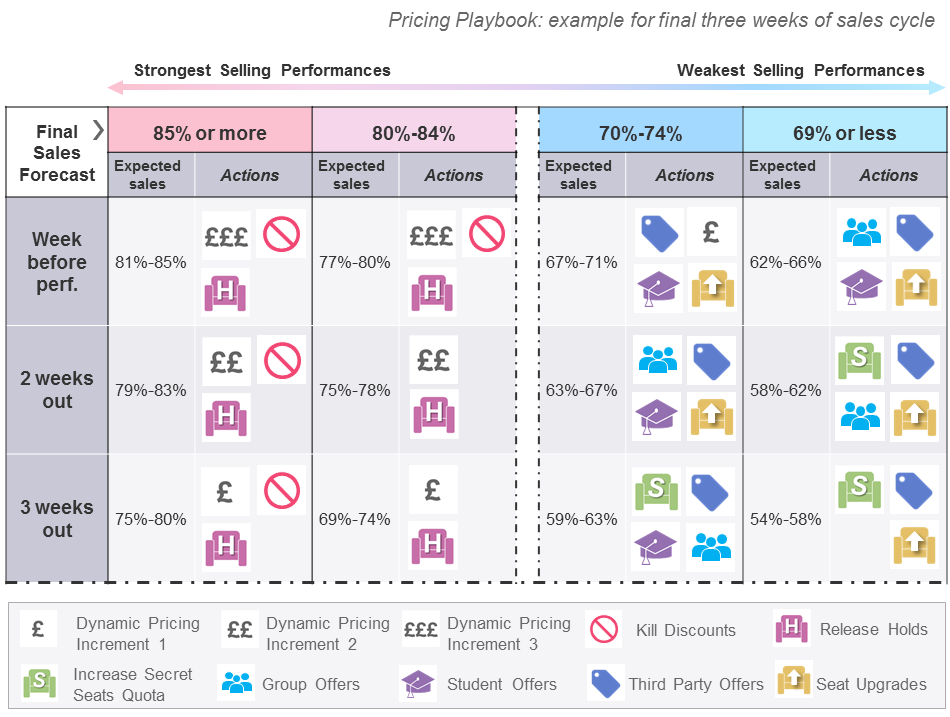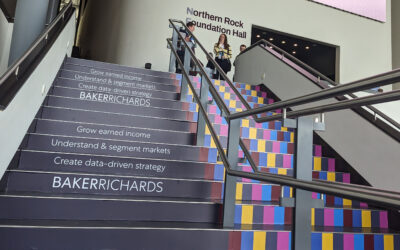Are you pricing dynamically?
Dynamic pricing is all the rage, but is just one tactic amongst many. How can organisations benefit by placing dynamic pricing in a wider context?
Dynamic pricing involves adjusting prices as patterns of demand unfold, raising prices and/or increasing the amount of inventory at particular prices when demand is strong. Some organisations also use dynamic pricing to reduce prices to stimulate sales when there is strong demand at lower prices, but little demand at higher prices. In either case, planning your changes in advance is key to a successful strategy, but more importantly a strategy focused on dynamic pricing alone misses much of the potential opportunity to be realised from pricing.
Right from the start
As explained in Marginal Gains, dynamic pricing is no substitute for getting your pricing right from the start. What’s more, dynamic pricing isn’t helpful for every organisation. If your business model relies heavily on members or subscribers, increasing the prices paid by single ticket buyers will have limited impact. And if you’re a presenting organisation that only retains 20% of box office, you’ll need careful calculations assessing the potential returns, or revised contractual terms so that you keep a greater share of the additional income. Setting prices, and the number of units at each price, optimally from the outset is the most effective way to maximise sales and income, but for most organisations getting pricing right from the start is a tricky business. This is where ‘pricing dynamically’ comes in. This approach uses the full range of pricing and inventory management tactics during the sales cycle – which might include dynamic pricing – to adjust your prices and offers in response to demand.
Not “one size fits all”
Pricing tactics, including dynamic pricing, should never be “one size fits all”. You need to find the pricing strategy solution that is appropriate for your organisation. Should you increase as well as reduce prices? By how much? Should you change the inventory available at already advertised prices or could you raise prices beyond these? What about adjusting the discounts or the seating inventory that’s available? How do the ‘rules’ vary for different repertoire, performances, price bands or price types (including considering any social objectives in respect of accessibility)? Can prices be raised at any time? And how will you communicate the strategy to your customers?
Pricing Playbook
Having determined your overall pricing strategy you can then start to think about the ways in which you can price dynamically to respond to patterns of demand during the sales cycle. To help our clients achieve this, we work with them to create a customised Pricing Playbook: an approach which recommends specific actions depending on how sales are performing against expectations. Actions can include dynamic pricing, but also strategic discounting (as opposed to indiscriminate last minute offers) and other tactics, including seat upgrades and the release of holds or inventory available for purchase as ‘Secret Seats’ (lower-priced, unallocated seats).
In the first instance, you need forecasts, not just of final sales but for each week (ideally) of your sales cycle. Your Pricing Playbook then acts as your guide, telling you what further information should be reviewed, and what planned actions to take.

Diving into detail
Whether using a Pricing Playbook or not, you still need to decide in advance what sales triggers will prompt which pricing actions. Pricing decisions should never be ad-hoc. This runs the risk of pursuing short-term fixes at the expense of long-term strategy – and of upsetting customers. Planning is also essential to make sure you have the data and structures in place to monitor demand against forecasts, and ultimately evaluate the effectiveness of your actions. In most ticketing systems, dynamic pricing is very easy to do, but can be much harder to track and analyse, so the way you set it up is crucial.
In monitoring demand, it’s important to understand not just overall sales, but patterns of demand at each different price. Putting all prices up based on overall sales is a very blunt approach that misses a lot of the opportunity that exists in exploiting demand between different prices. Center Theatre Group in Los Angeles used their Revenue Management Application to identify that there was stronger than expected demand for particular seats for one production. They raised prices for these seats (by up to $30) and generated over $500,000 in incremental income despite the production only selling 67% of capacity – proving you don’t need to sell out to benefit from pricing dynamically.
Auto adjust?
We are sometimes asked whether dynamic pricing can be automated. There are ‘black box’ solutions on the market that will tell you to put prices up by £5, £10, etc., as well as people who will recommend simply increasing prices when your sales hit a certain level. We believe a far more nuanced approach is required and over 100 arts organisations worldwide are using our Revenue Management Application (RMA) or Pricing Engine software to support dynamic pricing and ‘pricing dynamically’.
‘Black box’ solutions promise to make dynamic pricing easy, but we’ve all seen comical ‘malgorithms’ online as a result of automated adjustments. They also tend to focus solely on maximising income whilst most arts organisations have social and artistic objectives, which are equally as important, ensuring they remain accessible to as many different people as possible. A ‘black box’ might register something is selling differently to usual but cannot assess why so it has no context for whether a price change is appropriate and is therefore no substitute for human intervention – or, indeed, getting pricing right from the start.
To find out more about pricing dynamically see our insights for the Metropolitan Opera, Mayflower Theatre, and The MAC, Belfast.




